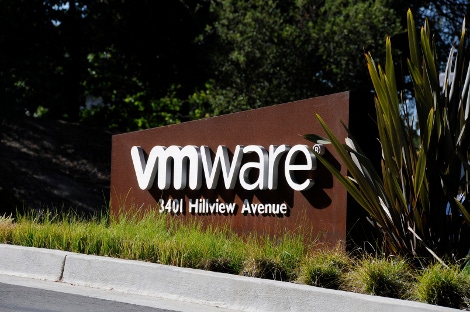VMware Says It Can’t Dole Out Project Pacific Beta Fast EnoughVMware Says It Can’t Dole Out Project Pacific Beta Fast Enough
Tanzu Mission Control, Project Pacific now in beta, and other VMworld Europe news

More people are wanting to get their hands on the beta version of VMware’s Kubernetes-infused vSphere than the company is able to accommodate.
VMware officially announced its “advanced beta” program for Project Pacific Tuesday at VMworld Europe in Barcelona, “with demand for participation outstripping availability.”
Project Pacific, VMware’s big initiative to make Kubernetes an inseparable part of vSphere, its flagship server virtualization software, has been in the works for several years, but the company announced it publicly only this past August, at VMworld in San Francisco.
The promise is to give IT admins a way to deploy, run, and manage Kubernetes using the same familiar vSphere tools across any infrastructure, on-premises or in a public cloud, while developers continue managing and deploying their applications using the Kubernetes tools they know.
For now, the Project Pacific beta program is open only to “select customers,” but the company is planning to expand access later this year. You can get in line to give Project Pacific a test drive when that happens here.
Along with the Project Pacific announcement in August VMware also announced Tanzu, a parallel initiative to build a whole portfolio of products and services to help enterprises use Kubernetes.
The portfolio’s first product is Tanzu Mission Control, a single point of control for Kubernetes clusters regardless of where they run – on-premises, in the cloud, on vSphere or otherwise.
Tuesday in Barcelona, the company said Tanzu Mission Control was also now in a closed beta with select customers but did not say when it would open up the beta program for a wider audience.
Among other announcements at VMworld Europe was an upcoming launch of VMware Cloud on AWS in Amazon cloud’s EU region, located in Stockholm. Expected to go live before the end of January 2020, it will be the fifth VMware Cloud on AWS availability region in Europe and 17th worldwide.
Launched about two years ago, it is a VMware-sold and VMware-operated cloud service, running VMware’s cloud infrastructure software on bare-metal servers inside AWS data centers.
Another major announcement was the introduction of VMware Cloud on AWS multi-tenancy for managed service providers. That means an MSP will be able to reserve an x amount of capacity on VMware’s Amazon cloud and use that capacity to serve multiple customers – a capability they haven’t had – presumably reducing their operational costs.
The multi-tenancy feature will be part of an upcoming VMware Cloud Director SaaS offering, expected to be out in beta by the end of January 2020.
For cloud providers that run VMware’s software on top of the largest cloud platforms – without owning and operating their own data centers – VMware announced Project Path, an initiative to give these providers a unified point of “management and operations across all VMware cloud endpoints.”
Project Path will expand VMware vCloud Director and Cloud Provider Hub capabilities to enable these smaller providers to manage their infrastructure across VMware clouds running on their own servers, or AWS, Microsoft Azure, Google Cloud, IBM Cloud, and Oracle Cloud.
The basic idea behind Project Path is to give smaller cloud providers the same core capabilities customers have come to expect when using the large public clouds, Chris Wolf, CTO of global field and industry at VMware, told us. Those are things like self-service, multi-site deployments and availability zones, multi-tenancy, object storage, container runtime, autoscaling, and so on.
About the Author
You May Also Like







